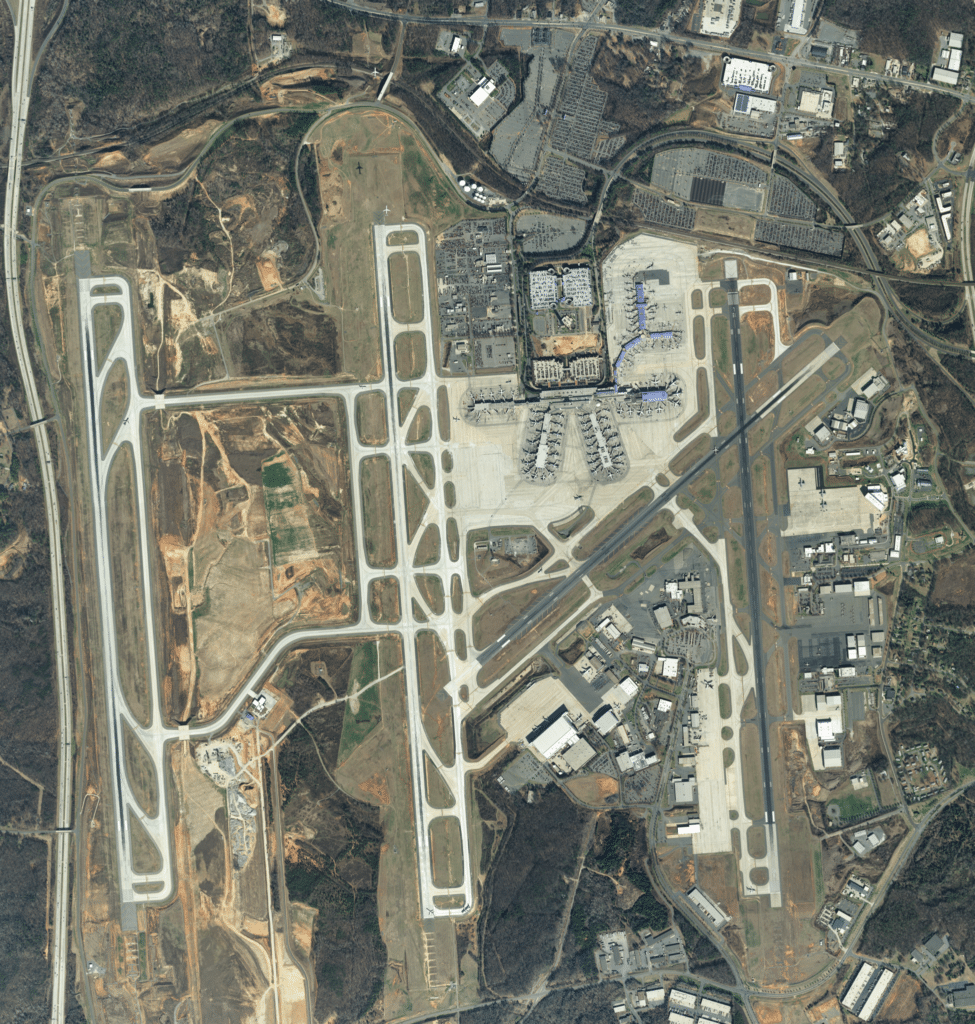Charlotte Douglas International Airport (CLT), a major hub for American Airlines and a key player in the Queen City’s economic engine, boasts a rich history intertwined with the growth of Charlotte itself.
This article explores the airport’s evolution, from its humble beginnings as a municipal airstrip to its current status as a bustling international gateway.
Early Days: Taking Flight (1930s-1950s)
The story of CLT begins during the Great Depression.
In 1935, recognizing the potential of air travel, Charlotte officials secured funding for a municipal airport.
Construction began the following year, and in 1936, Charlotte Municipal Airport welcomed its first commercial flight, a single-engine aircraft carrying passengers to Columbia, South Carolina.
The airport’s early years were marked by steady growth.
During World War II, the facility served as a military training base, highlighting its strategic location.
Following the war, commercial airlines like Eastern Air Lines and Piedmont Airlines began establishing a presence, offering connections to major cities on the East Coast.
In 1954, the airport was renamed Douglas Municipal Airport in honor of former Mayor Ben Elbert Douglas, Sr., who had championed its development.
This period also saw the construction of the first terminal building, a modest structure reflecting the airport’s regional role.
The Jet Age and Rise of a Hub at Charlotte International Airport (1960s-1980s)
The arrival of the jet age in the 1960s revolutionized air travel.
Douglas Municipal Airport, now facing increased demand, embarked on a significant expansion.
A new terminal building, designed to accommodate the larger jet airliners, opened in 1962.
This decade also witnessed the rise of Piedmont Airlines, a regional carrier headquartered in Winston-Salem, North Carolina.
Piedmont saw Charlotte‘s potential as a hub and expanded its operations there, laying the groundwork for the airport’s future dominance.
The 1970s brought continued growth and the merging of Piedmont Airlines with Eastern Air Lines.
However, this decade also saw the deregulation of the airline industry, leading to a period of consolidation.
Eastern Air Lines eventually faced financial difficulties and declared bankruptcy in the early 1990s.

Seizing this opportunity, American Airlines, impressed by Charlotte’s central location and strong infrastructure, established its second-largest hub at Douglas Municipal Airport in 1980.
This move proved pivotal, transforming the airport into a major player in the national air travel network.
To reflect its expanded role, the airport’s name was officially changed to Charlotte Douglas International Airport (CLT) in 1982.
Hub Expansion and Looking Ahead (1990s-Present)

The 1990s and 2000s were marked by significant growth for CLT under American Airlines’ leadership.
The passenger numbers soared, necessitating further expansion. New concourses were added, the terminal was renovated, and a focus was placed on improving passenger amenities.
CLT also emerged as a leader in cargo transportation, becoming a vital link in the global supply chain.
In recent years, CLT has continued to innovate and expand.
The “Destination CLT” project, a multi-billion dollar initiative launched in 2019.
This aimed to further enhance the passenger experience by adding new concourses, a fourth runway, and improved technology integration.
CLT remains a major economic driver for Charlotte, generating thousands of jobs and contributing significantly to the city’s GDP.
Looking ahead, CLT is well-positioned to maintain its status as a global hub.
Its strategic location, strong airline partnerships, and commitment to innovation ensure its continued success in the ever-evolving world of air travel.
Beyond the Hub: A Few Interesting Facts

- CLT is home to the Carolinas Aviation Museum, one of a handful of major airports with an aviation museum located on-site.
- The airport has been consistently recognized for its customer service and efficiency, earning numerous awards over the years.
- CLT is a major center for corporate aviation, with a dedicated fixed-base operator serving private and business jets.
In conclusion, Charlotte Douglas International Airport’s story is one of vision, innovation, and adaptation.
From its humble beginnings as a municipal airstrip to its current status as a global hub, CLT has played a crucial role in Charlotte’s growth and continues to be a vital link connecting the Queen City to the world.

Click the banner to subscribe to our weekly newsleter.

Click the photo to join our WhatsApp channel so then you can stay up to date with everything going on in the aviation industry!








